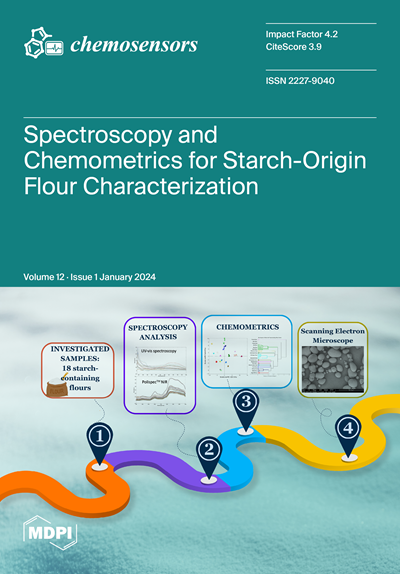基于拉曼光谱和 ResNeXt50 深度神经网络的银杏酮酯脱色过程中三种有毒银杏酸的快速测定
IF 3.7
3区 工程技术
Q2 CHEMISTRY, ANALYTICAL
引用次数: 0
摘要
脱色工艺在提炼银杏酮酯的过程中起着至关重要的作用,主要是消除银杏酸这种有毒成分。目前,传统的检测方法需要将样品送去分析,造成延误,影响配方生产。因此,开发一种快速过程控制方法势在必行。本研究介绍了一种在银杏酮酯脱色过程中快速检测三种银杏酸的方法。首先,采用超高效液相色谱-串联质谱(UPLC-MS/MS)方法评估了 91 份脱色溶液样品中银杏酸 C13:0、银杏酸 C15:1 和银杏酸 C17:1 的浓度,并确定了参考值。随后,使用便携式拉曼光谱仪收集了脱色液体在 3200-200 cm-1 波长范围内的拉曼光谱。最终,利用偏最小二乘回归(PLSR)和 ResNeXt50 深度学习算法,两个定量校准模型将银杏酸含量与拉曼光谱数据相关联。两个模型都表现出很高的预测准确性,其中 ResNeXt50 模型表现出更优越的性能。银杏酸 C13:0、银杏酸 C15:1 和银杏酸 C17:1 的预测集相关系数 (Rp2) 分别为 0.9962、0.9971 和 0.9974,预测均方根误差 (RMSEP) 值分别为 0.0144、0.0130 和 0.0122 μg/mL。相比之下,PLSR 模型对三种银杏酸的 Rp2 值分别为 0.9862、0.9839 和 0.9480,RMSEP 值分别为 0.0273、0.0305 和 0.0545 μg/mL。通过梯度加权类活化图谱(Grad-CAM)分析,ResNeXt50 模型不仅显示出更高的精确度,还增强了可解释性。拉曼光谱与 ResNeXt50 定量校准模型的整合提供了一种实时、精确的方法,用于监测银杏酮酯制备过程中脱色溶液中的银杏酸含量。这一重大进步为在脱色过程中实施质量控制措施建立了一个稳健的框架。本文章由计算机程序翻译,如有差异,请以英文原文为准。
The Rapid Determination of Three Toxic Ginkgolic Acids in the Decolorized Process of Ginkgo Ketone Ester Based on Raman Spectroscopy and ResNeXt50 Deep Neural Network
The decolorization process plays a pivotal role in refining Ginkgo ketone ester by primarily eliminating ginkgolic acids, a toxic component. Presently, the conventional testing method involves sending samples for analysis, causing delays that impact formulation production. Hence, the development of a rapid process control method becomes imperative. This study introduces a swift detection approach for three ginkgolic acids during Ginkgo ketone ester’s decolorization. Initially, an ultra-high-performance liquid chromatography-tandem mass spectrometry (UPLC-MS/MS) method assessed ginkgolic acid C13:0, ginkgolic acid C15:1, and ginkgolic acid C17:1 concentrations in 91 decolorized solution samples, establishing reference values. Subsequently, using a portable Raman spectrometer, Raman spectra of the decolorized liquid within the 3200–200 cm−1 wavelength range were collected. Ultimately, employing partial least squares regression (PLSR) and ResNeXt50 deep learning algorithms, two quantitative calibration models correlated the ginkgolic acid content to Raman spectral data. Both models exhibited high predictive accuracy, with the ResNeXt50 model demonstrating superior performance. The prediction set correlation coefficients (Rp2) for ginkgolic acid C13:0, ginkgolic acid C15:1, and ginkgolic acid C17:1 were 0.9962, 0.9971, and 0.9974, respectively, with root mean square error of prediction (RMSEP) values of 0.0144, 0.0130, and 0.0122 μg/mL. In contrast, the PLSR model yielded Rp2 values of 0.9862, 0.9839, and 0.9480, with RMSEP values of 0.0273, 0.0305, and 0.0545 μg/mL for the three ginkgolic acids. The ResNeXt50 model not only showcased higher precision but also enhanced interpretability, as analyzed through gradient-weighted class activation mapping (Grad-CAM). The integration of Raman spectroscopy and the ResNeXt50 quantitative calibration model furnishes a real-time and precise approach to monitor ginkgolic acid content in the decolorized solution during Ginkgo ketone ester preparation. This significant advancement establishes a robust framework for implementing quality control measures in the decolorization process.
求助全文
通过发布文献求助,成功后即可免费获取论文全文。
去求助
来源期刊

Chemosensors
Chemistry-Analytical Chemistry
CiteScore
5.00
自引率
9.50%
发文量
450
审稿时长
11 weeks
期刊介绍:
Chemosensors (ISSN 2227-9040; CODEN: CHEMO9) is an international, scientific, open access journal on the science and technology of chemical sensors published quarterly online by MDPI.The journal is indexed in Scopus, SCIE (Web of Science), CAPlus / SciFinder, Inspec, Engineering Village and other databases.
 求助内容:
求助内容: 应助结果提醒方式:
应助结果提醒方式:


